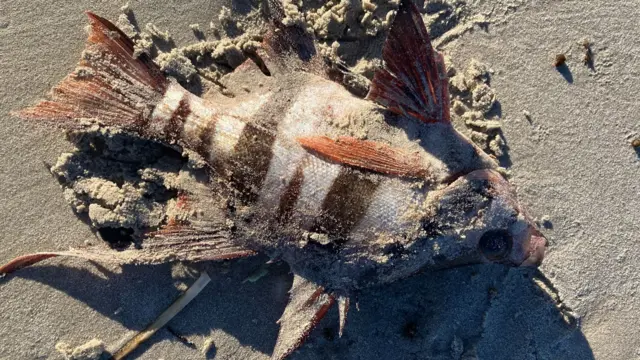Dead fish, sharks, and rays—including a 3-metre great white shark—have washed up on beaches, with many showing signs of hemorrhaging caused by the algae’s potent toxins. BBC News reports that the bloom has been sustained by unusually warm ocean temperatures, linked to an ongoing marine heatwave.
Why Is This Happening?
Marine biologist Vanessa Pirotta and OzFish’s Brad Martin explain that these algae act like a suffocating blanket, stripping oxygen from the water and attacking fish gills and blood cells. Some species—like crabs and reef pufferfish—are especially vulnerable because they can’t escape.

Officials blame a combination of climate change and nutrient-rich waters for fueling the bloom. South Australia has experienced temperatures 2.5°C above average since late 2024, with little relief in sight.
Human & Economic Impact
The SA Department for Environment and Water has urged residents to avoid swimming in discolored or foamy water. While the algae is not directly harmful to humans, exposure can cause skin and respiratory irritation.
The event has also disrupted local fisheries and tourism, as businesses near affected beaches see a sharp drop in visitors.
What’s Next?
With the bloom continuing to spread westward, researchers are conducting autopsies and water tests to assess long-term damage. Some experts warn this could become a recurring threat if climate trends persist.

Conclusion
This disaster underscores the urgent need to address warming oceans and coastal pollution. For related coverage, visit:
- Climate Change Effects on Marine Ecosystems
- 2025 Marine Heatwave in Australia
- Past Algal Bloom Events in Australia
🔗 Short URL: example.com/sa-toxic-algae-2025









